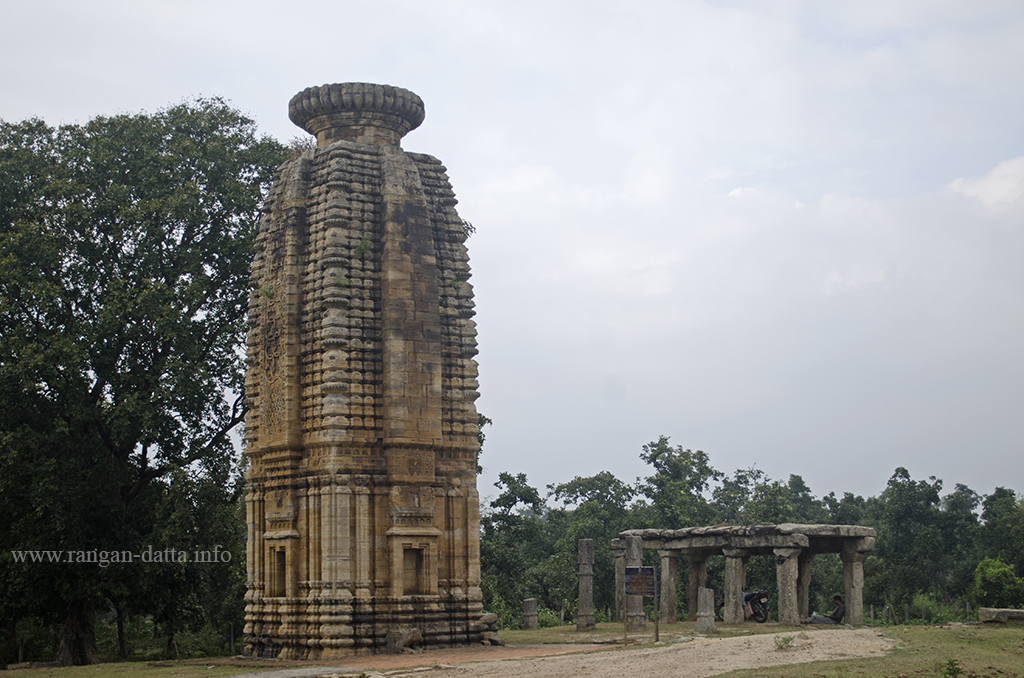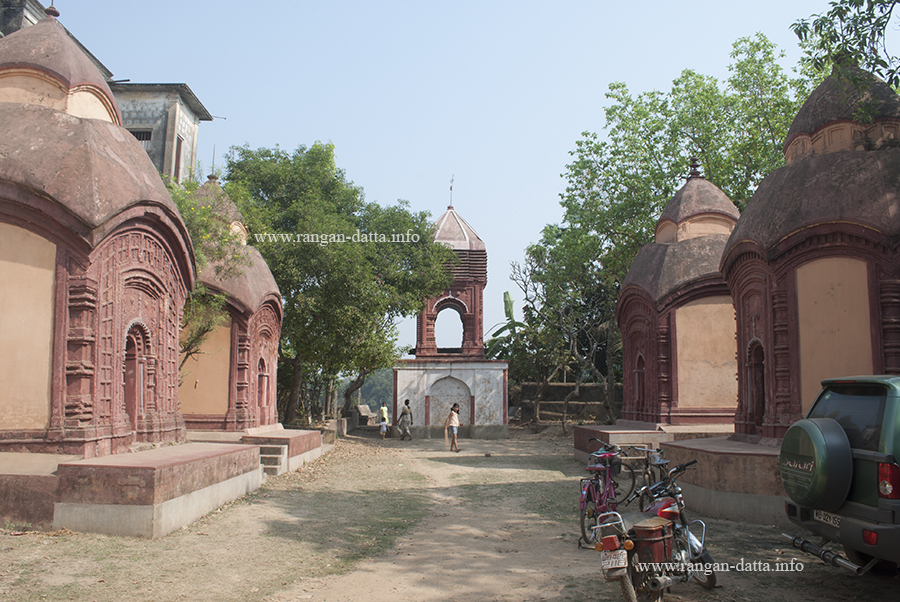Archive
Ichai Ghosher Deul, a towering temple on the banks of River Ajay
Ichai Ghosher Deul
A towering temple on the banks of River Ajay
Also see: Weekend family trip to Bhalki Machan
The Covid 19 outbreak have changed the way we live and after spending over 10 months confined at home we finally decided to hit the road. The visit to the Ichai Ghosher Deul was part of a weekend trip to Bhalki Machan, which was known for its crumbling tower like structure.
According to local folklore the tower like structure in Bhalki Machan served as hunting platform, which was used by the local landlords to hunt bear. But historians have a different story and historical records confirm the tower was actually a Great Trigonometrical Survey (GTS) Tower, used for surveying and mapping the country almost 200 years ago.
Jora Deul, Baidyapur, Kalna, Bardhaman
Jora Deul, Baidyapur
Kalna, Bardhaman
Stone has always been in short supply in the vast flood plains of Bengal. Hence the architects had to restore to other substitute. As clay was easily available the burnt clay bricks soon became a good substitute of stone.

Jore Deul (or two adjacent temple), Baidyapur
This gave rise to a new form of temple architecture and lead to the construction of elaborately decorated terracotta temples. Terracotta literally means baked earth in Italian but West Bengal has the distinction of housing some of the finest terracotta art in the world.
Banda Deul, Most Preserved Stone Temple of Purulia District
Banda Deul
Most Preserved Stone Temple of Purulia District
See also: Wiki Explores Purulia
Historical records suggest that during the 10th – 13th century a flourishing Jain settlement flourished in the western part of West Bengal covering the present districts of Purulia, Bankura and Jhargram. During this period they have built numerous brick and stone temples, following the Oriya Duel style architecture.
Purulia had the largest concentration of these Jain Temples although many of them have crumbled to dust but a hand full have survived the test of time and still towers above the rural landscape of Purulia district. These towering temples, built of both brick and stone, can still be seen in the villages of Para, Pakbira, Deulghata, Deuli and Banda.
Jatar Deul and finally the Horse Race
Horse Race at Jatar Deul
Kankandighi, Raidighi, 24 Parganas (South)
Also see: Jatar Deul and the Illusive Horse Race
It was the second day of the Bengali new year 1420 (16 April 2011), my friend Amitabha Gupta and I headed for the Jatar Deul to witness the horse race. After a 4 + hour journey via train, auto and motor van we finally made it to Jatar Deul only to be informed that the horse race has been postponed to 25 Baikash (9 May) because of Elections.
Amitabha and I decided to retrace out steps back to Jatar Deul for the illusive horse race. On 9thMay we repeated our 5 hours long journey only to be informed that the race was called off due to unofficial reasons. (Also see: Jatar Deul and the Illusive Horse Race)
Lakshmi Janardhan Temple, Debipur
Lakshmi Janardhan Temple, Debipur
A towering rekh deul temple
The nondescript village of Debipur, located on the Howrah – Bardhman main line has a distinction of housing a towering temple.
For the most comfortable journey it is best to take the Bardhman Local (Main) from Howrah. It takes about one and half hour to reach Debipur.
A short bus or trekker ride from Debipur station takes you to Shivtala, where the towering Lakshmi Janardhan Temple (Lakshmi Janardan Temple) is located.
Before reaching the Lakshmi Janardhan Temple the visitors will be welcomed by a unique structure at the Shivtala bus stop.
This structure consists of three connected structures built on a single raised platform. The structures on the side are aat – chal (8 sloped roof) shiva temples.
The central structure is a dol mancha. The open dol mancha, stands on a elevated platform and towers above both the temples.
The structure contains beautiful terracotta ornamentation on its front surface, including a false door way, below the dol mancha. A marble plaque on the doorway indicates that the structure was constructed in 1283 of Bengali calendar which is equivalent to 1836.
Sukharia ~ Restoration of Harsundari and Nistarini Temple
Sukharia, Somra Bazar, Hooghly
Restoration of Harsudari and Nistarini Kali Temple
See also: My blog post Mitra Mustafi Trilogy
The quint little village of Sukharia, located next to the Somra Bazar station, on the Bandel – Katwa rail line houses an amazing collection of temples and huge mansions.
Hadal Narayanpur ~ Amazing Terracotta Beyond Bishnupur
Hadal Narayanpur
Amazing Terracotta Beyond Bishnupur
See also: Bishnupur Temple Town and Beyond Bishnupur
Bushnupur has always been considered as the Terracotta capital of West Bengal. But the terracotta temple art have spread far beyonds the limits of Bishnupur and several of the villages surrounding Bishnupur houses many spectacular terracotta temples.
Joypur, Dihar, Bahulara, Gokulnagar and Sonamukhi definitely deserves a mention but the village thats stands out is Hadal Narayanpur. This twin villages has the distinction of housing several terracotta temples with the most intricate and delicate carvings.
Bishnupur, Temple Town
Bishnupur
Temple Town
Stone has always been in short supply in the vast flood plains of Bengal. Hence the architects had to restore to other substitute. As clay was easily available the burnt clay bricks soon became a good substitute of stone. This gave rise to a new form of temple architecture and lead to the construction of elaborately decorated terracotta temples.
Terracotta literally means baked earth in Italian but West Bengal has the distinction of housing some of the finest terracotta art in the world. The terracotta art reached its pinnacle under the patronage of the Malla Kings of Bishnupur during the seventeenth century.





















